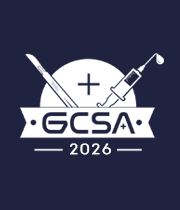Title : Transoral endoscopic vestibular approach for parathyroid surgery: A systematic review of clinical outcomes and safety
Abstract:
Background: The transoral endoscopic parathyroidectomy vestibular approach (TOEPVA) is a scarless, minimally invasive technique for parathyroid surgery, mostly indicated in primary hyperparathyroidism. Building on transoral thyroid surgery, TOEPVA offers direct midline access without visible scarring. Despite advantages, concerns remain regarding safety, learning curve, and effectiveness in gland localisation and excision. This review evaluates current evidence on TOEPVA outcomes and limitations.
Method: A search of major databases through May 2025 identified 255 studies, with eleven included from international centres of 280 adults undergoing TOEPVA. These comprised case series, retrospective cohorts, and comparative studies. Two independent reviewers screened and analysed data. Key outcomes included cure rates, recurrent laryngeal nerve (RLN) palsy, hypocalcaemia and cosmetic satisfaction. Operative time, hospital stay, and technical challenges were assessed. Systematic reviews were examined separately for context.
Results: Cure rates were uniformly high (>95%) with a 1% open conversion rate. There were no reports of permanent RLN palsy; transient palsy in up to 9%. Hypocalcaemia rates varied but similar to conventional surgery. Operative times (40-260 min) decreased with experience. Hospital stays were brief (1–3 days), and cosmetic satisfaction was excellent. Patient selection and surgeon training were emphasised.
Conclusion: TOEPVA is a promising scarless technique for select patients with hyperparathyroidism, delivering high cure rates and excellent cosmetic outcomes with a safety profile comparable to other approaches when performed by experienced surgeons. Wider adoption requires standardised protocols, training pathways, and further multicentre studies to optimise outcomes.



